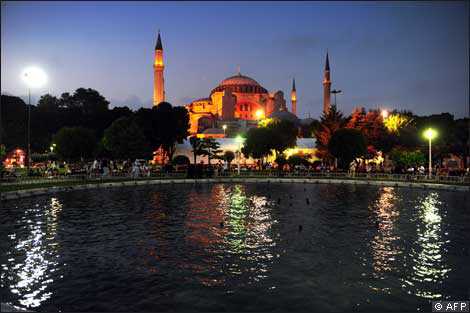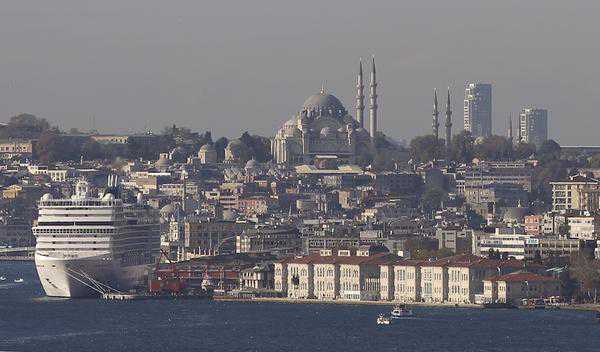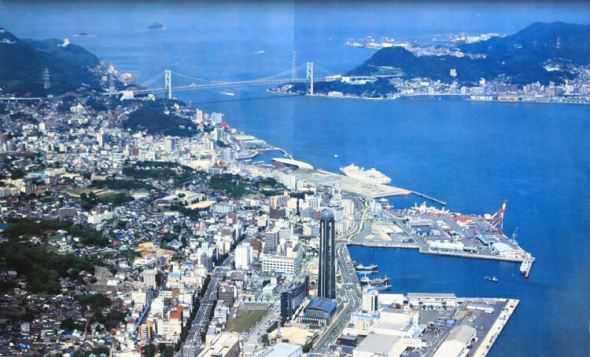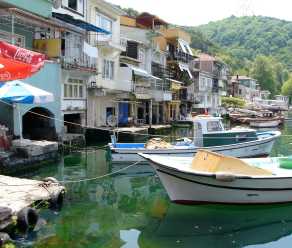Posted: 05/22/2011 07:25:02 AM PDT

The town of Sile (pronounced “Sheeleh”) rests on a crest of high hills overlooking the Black Sea, in high, forested countryside about an hour north of Istanbul. At the base of the hills lies a long, flat harbor with a pair of enormous rocks jutting up from the sea just offshore, like twin krakens. The remains of an old fortress stand at the top of one of the rocks.
Sile is a quiet, charming town, with modest shops and narrow streets. The sheer size and mass of Istanbul seem an unpleasant dream in this perfect weekend getaway place. The people are easygoing, familiar and friendly to visitors, foreigners and Istanbullus alike, as most Black Sea Turks tend to be. Hospitality is in their blood. And the food is better.
The longer you live in Istanbul , the more you need to get away, despite its irresistible allure. Istanbul, with its incessant traffic, crowds, car horns, shouting drivers, cats and dogs, and pollution can make you feel trapped at times. While the feribots on the Bosphorous provide some relief — a Bosphorous cruise can do the trick in a pinch — sooner or later, it’s not enough. You just have to get out. In Sile, you can walk its hilly streets, drink in the quiet and unhurried pace and feel restored.
Burhan, one of the waiters at a fish cafe near the waterfront, agrees.
”Four years I lived in Istanbul,” he said. “20 million people! Çok! Çok! If I go back it will be only to maybe open a shop.”
It was hot and bright and at the café, and Burhan installed an umbrella over my table to keep out the sun. He speaks English thanks to his Polish fiancée. They met while on a holiday in Bodrum, stayed in touch and after a year became engaged. The wedding will be sometime during the summer. Burhan, hearing I teach in Istanbul, hopes I can offer some advice on where his bride-to-be could teach English when she arrives — perhaps in a company, or at one of the universities. He urged me to come back to the café in the morning for breakfast — it was lunchtime and the café was starting to get busy — and we can talk about it some more.
It was the first really warm day of the year after a persistent winter. Earlier that morning I’d taken my trumpet down to the beach and sat near the sea playing, with a young Turkish guy and his girlfriend as an audience. The girl wore a headscarf and was a little shy, but they sat cuddling on one of the rocks and listening to the music. Later I walked, taking in the new spring flowers that were growing right up near the beach. Two children were playing with a football near a dilapidated restaurant that Burhan said was closed for repairs. When I took their photo, the girl posed. She wore a charming little dress and she almost curtsied, tilting her head to one side. Then I went up to the sea wall and looked out at the Black Sea. It was still early in the year, and its waters were cold and choppy.
I hadn’t planned on staying the night, but sitting there in the café that afternoon, reading and looking out at the sun shining over the harbor, a dog asleep on the pier, I was suddenly seized by such a feeling of relaxation and peace, a peace I hadn’t felt for months, that an overnight stay was irresistible. Why not finish this beer, pay the bill and look about for a room for the night? Tomorrow is Sunday and there will be express buses back to Istanbul.
Burhan suggested I stay at the Sile Motel and said I should ask for a man named Hakan, telling him Burhan had sent me, and he would fix me up. I walked back up the hill into town and found the place, but unfortunately, it was booked. Just down the street was another place. A woman there gave me a double room for 75 lira (about $50 U.S.), which wasn’t bad, and the balcony view of the sea instantly set my mind at ease. The door to the balcony wouldn’t close properly, and because I have had personal experience with thieves in Istanbul, I didn’t leave anything in the room. I’d only brought a small bag containing my notebook, a camera and also my trumpet, which was new and I didn’t want to risk anything happening to it.
Other than the door problem, the room was fine, clean and the bed was very comfortable. I took a nap and headed out around 5, up the hill to the Teras Café, a wonderful, airy terraced café with a fine view of the main street next to the mosque. There were only a few men there, regulars, and they were friendly. When I asked about Black Sea music they immediately grabbed a couple of guys and went up and played. One of them, a young man, played on the lute that is called a saz, while another man sang in the melancholy, melismatic style common to the Middle East and Asia Minor. He added some of the strutting, kicking, dancing style that is almost Russian and also common around the Black Sea.
A little later, I wandered back toward the hotel and stopped at another café called Melek Abla, a ma-and-pa establishment with tasteful light wood décor, many windows and lots of tables outside. There were only a few customers, and when I told the proprietor, Ismael, that I wanted to drink beer, he directed me to a separate room, which was fine since I wanted to write and enjoy the sunset alone. The room was open air and the sun was just beginning to set over the sea. Ismael and his wife, who worked in the kitchen, were very polite but reserved, and you could tell they themselves looked upon the beer as a necessary evil (the visitors wanted beer so it must be served). I tried striking up a conversation with Ismael but he didn’t seem anxious to talk. I complimented him on his place, and said how I much I enjoyed getting out of Istanbul.
”Evet!” he said. “Istanbulda çok kalabul k!” Istanbul is too crowded, he said. But without saying anything more he went back to the other room, which was fine; I sat and drank the beer and wrote, stopping now and again to watch the sun going down. A couple of tour buses passed by and people got out. They were staying at one of the hotels for the night.
As it got darker, I sat back and listened to the music from the Teras Café up the hill and watched the boats coming into the harbor. The sea wall in the dusk was silhouetted, the setting sun dazzling over the sea, and a few sea gulls swooped high overhead. I thought about Istanbul and then pushed it out of my mind. As exciting as the city can be, you need to catch your breath. In Sile you can breathe again; you’ve stepped away from Istanbul, where everything seems to compete for your attention — the mass billboards, the cars honking at you, the gypsy beggars, the endless political ads blaring from megaphones now that elections are near, not to mention the imams chanting the ezan five times a day.
Just then, I heard the imam. Here in Sile the ezan seems to have its place, among the tender groves of calm and silence, the chirping of birds, the distant sound of the sea. In Istanbul they compete with all the other sounds, the cacophony of life in a sprawling, overcrowded metropolis, and are about as pleasant as the overheated cat yowling outside your window.
In Sile, the peace will not last. In a month or so it will be just as crowded here as it is in Bodrum or Antalya, or any other Turkish resort town. But for now there is that calm which recognizes the dignity of the soul, whoever you may be or whatever it is you’re looking for. The sun sets unmolested by skyscrapers, the sea sits like a fresh portrait drying on the wall, and in the streets there are people but not too many, and they are not all busy gesturing and shouting into their mobile phones. People sit at the café tables in the evening and can reflect on the day undisturbed while night comes. Offshore a boat, tiny in the distance, passes. But you feel no desire to be on that boat because you have what it has — the pleasure of solitude, of drifting offshore.
James Tressler covered government and politics for the Times-Standard. He’s now a writer and teacher living in Istanbul.






